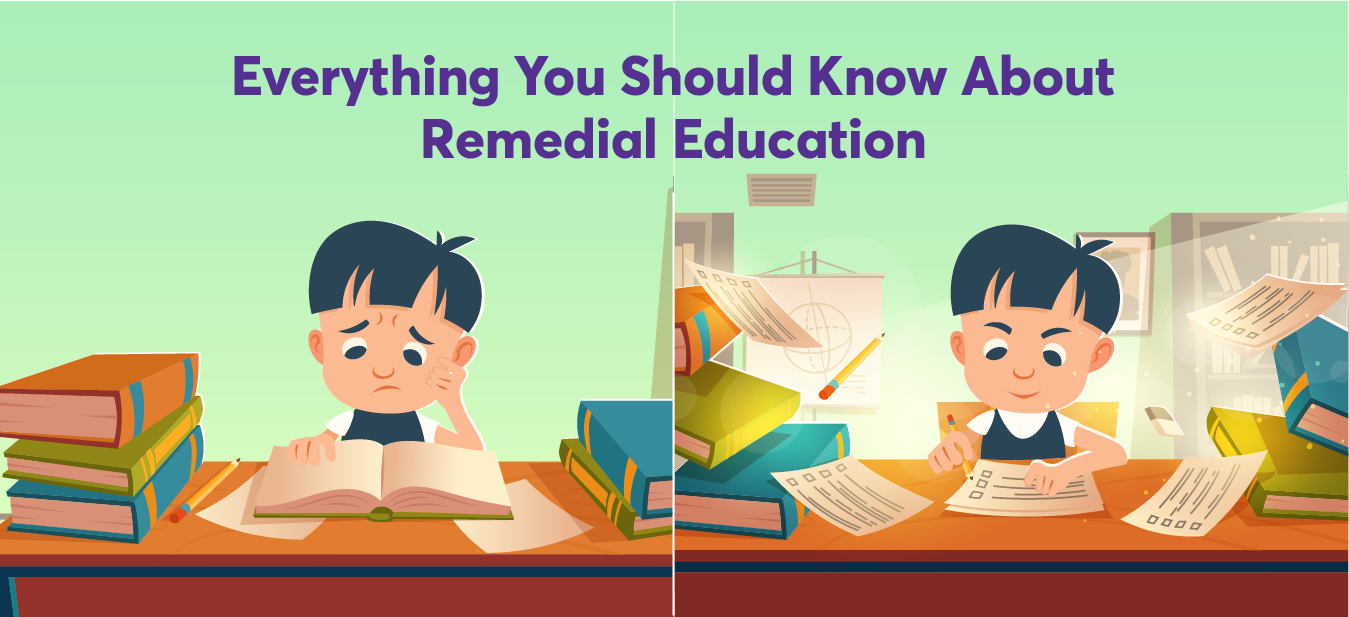In mainstream schools, every student must learn certain things before proceeding to the next class. However, not all students learn at the same pace. Some are quick learners while others aren’t, and therefore need a little push and additional attention to attain maximum potential.
Nothing can be more challenging than having a child struggling at school. No one likes being left behind, and who wants to put in extra effort when you already feel that you have exhausted every available option? As parents & educators, you want your children to do better in school, and when they fall behind, it becomes your job to get them back on track.
Remedial education is the solution to giving kids an extra push. It has been designed to help students who have not been successful in traditional academic settings, and provides instruction and practice in skills that will enables learners to progress in the general education curriculum.
Remedial education is a holistic way of addressing learning difficulties, an umbrella term for special education or supportive learning programs which provide instruction in basic skills like reading or arithmetic. The curriculum varies from state to state but usually addresses several disciplines like literacy, social studies, math, science, and sometimes physical education.
Why is Remedial Education Important?
Remedial education is essential for students to receive instruction in basic math, reading, and writing skills that they have not yet acquired. In addition, these students find learning difficult in a classroom due to earlier struggles with language development and basic learning skills. Remedial classes can accommodate students’ needs by being able to provide one-on-one or small group classrooms for students. There are many reasons why there is a need for remedial education, including:
- Students may have had trouble learning in the past and need more time to develop the skills they need to succeed academically. Remedial education provides a chance for students who have struggled with basic skills to build confidence in themselves and improve self-esteem—something significant for high school students looking ahead to college or career training programs.
- Students may not have been exposed to the same level of academic rigour as others when they were younger. Remedial education provides an opportunity for students who are likely to become disengaged from school or drop out early to get the support they need to succeed in postsecondary education programs or careers.
- Students may come from an environment where they do not have access to quality instruction or resources. Remedial education provides an opportunity for students facing academic challenges due to learning disabilities or other factors to receive additional support from qualified teachers and counsellors to achieve their goals.
- Students may have been dealing with issues at home that made it difficult to focus on academics. They may have had trouble adjusting socially and felt isolated or alone. Or they may have struggled with an undiagnosed learning disability that was never addressed or treated appropriately within the public school system. Remedial education can give a push to such children, positively affecting a student’s ability to learn and be successful in school.
Methods of Remedial Education
Remedial education can be provided in many ways depending on the individual needs of the student as well as their desired learning style. For example, some students are more comfortable learning through reading, while others prefer auditory methods such as listening to lectures or watching videos. Below are some of them:
- Supplemental Instruction: A teacher or other professional works with a student individually to help them understand a concept or skill they have not mastered. This can be done in person, via video conferencing, or online.
- Compensatory Education: Students are provided with extra time and resources to make up for deficits identified through testing or assessment. This approach is sometimes used for students who have previously learned at an accelerated rate.
- Small-Group Tutoring: Students work together in groups of three to six people with one instructor at a time. The instructor gives corrective feedback while they work together on specific assignments or projects related to the course material being taught. This method may be more effective than tutoring alone because students can learn from each other’s mistakes and instructor feedback.
- Computer-Assisted Instruction (CAI): CAI uses computers to deliver instruction and practice materials tailored to the needs of individual students. The computer’s feedback mechanism provides immediate assessment and feedback so that students can learn at their own pace.
At Square Panda, our focus is on getting ECCE right to ensure that the need for remedial education is minimised down the line for students. To know more about our work, visit ecce.squarepanda.in

